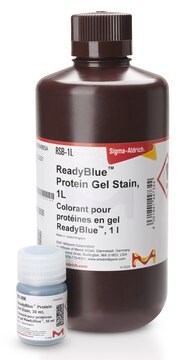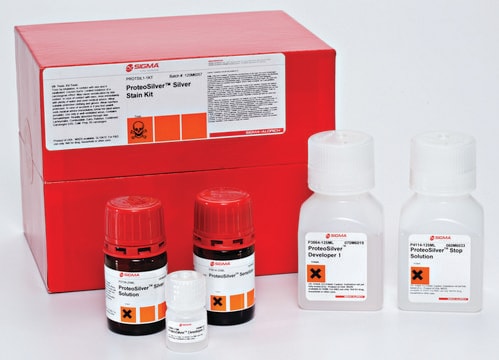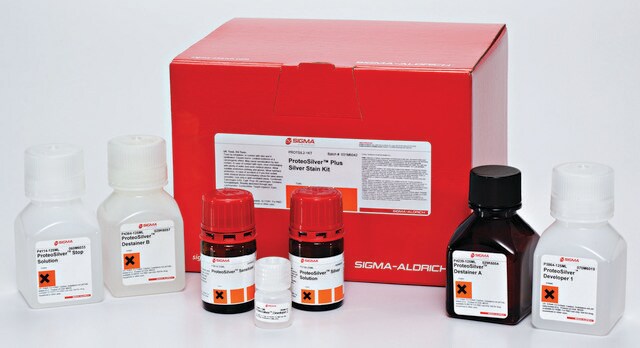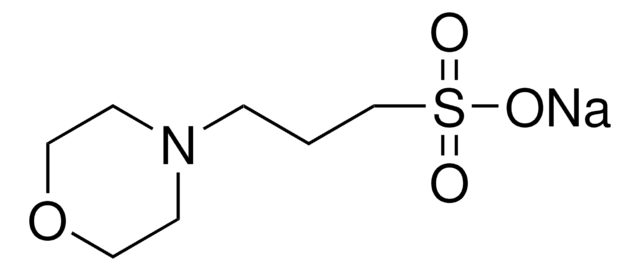S4942
SYPRO® Ruby Protein Gel Stain
Synonym(s):
SYPRO® dye, protein gel stain
About This Item
Recommended Products
shelf life
≥6 mo. (when stored at room temperature and protected from light)
Quality Level
technique(s)
protein staining: suitable
fluorescence
λex 280,450 nm; λem 610 nm
General description
- uses a simple staining protocol, with no possibility of overstaining
- delivers a linear quantitation range of over three orders of magnitude
- shows less protein-to-protein variability
- stains glycoproteins, lipoproteins, calcium-binding proteins, fibrillar proteins, and other difficult-to-stain proteins
- will not stain extraneous nucleic acids
- does not interfere with subsequent analysis of proteins by Edman-based sequencing or mass spectrometry
Application
Caution
Legal Information
Storage Class Code
10 - Combustible liquids
WGK
WGK 3
Flash Point(F)
Not applicable
Flash Point(C)
Not applicable
Personal Protective Equipment
Choose from one of the most recent versions:
Already Own This Product?
Find documentation for the products that you have recently purchased in the Document Library.
Articles
To meet the great diversity of protein analysis needs, Sigma offers a wide selection of protein visualization (staining) reagents. EZBlue™ and ProteoSilver™, designed specifically for proteomics, also perform impressively in traditional PAGE formats.
Protocols
Introduction to PAGE. Learn about SDS-PAGE background and protocol for the separation of proteins based on size in a poly-acrylamide gel.
Our team of scientists has experience in all areas of research including Life Science, Material Science, Chemical Synthesis, Chromatography, Analytical and many others.
Contact Technical Service







